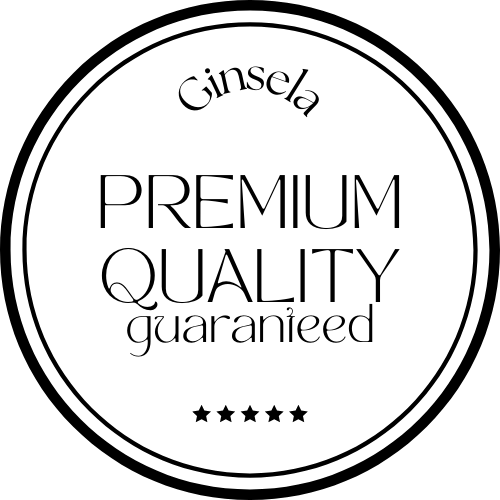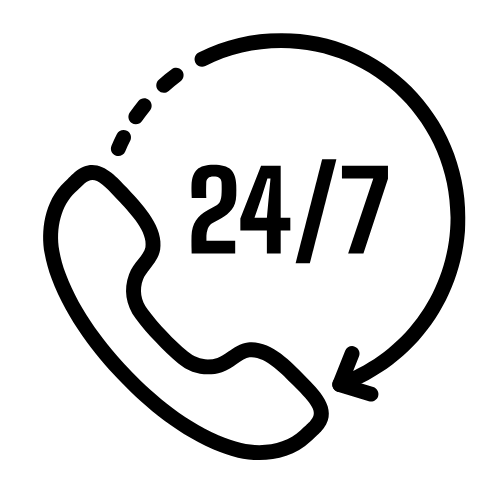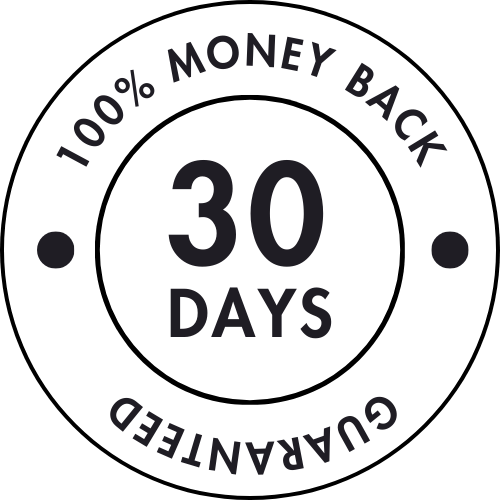TL;DR
Biotin (vitamin B7) is essential for healthy hair because it helps your body convert food into energy and supports keratin infrastructure. But for most people with a balanced diet, extra biotin doesn’t make hair grow faster or thicker. True biotin deficiency is uncommon and often tied to specific medical or dietary situations. A smarter plan is food-first nutrition (protein, iron + vitamin C, zinc, vitamin D, omega-3s), consistent habits over 8–12 weeks, and—if you like—lightweight scalp care as an add-on. Use high-dose biotin only if your clinician finds a deficiency, and always tell your lab about biotin intake because it can interfere with some blood tests.
Story Beats (Narrative Arc)
When Alex started shedding after a life-stress spiral, she bought a high-dose “hair vitamin” with massive biotin. Two months later, nothing obvious changed—except a confusing thyroid lab result that forced a retest. Her dermatologist asked, “What’s in your supplements?”
Alex learned that unless you’re truly low in biotin, more isn’t more. Hair growth depends on protein, iron, zinc, vitamin D, and omega-3s, plus time. Biotin helps when you’re deficient, but megadoses won’t bulldoze past other missing pieces.
She rebuilt breakfast around 25–35 g protein, added iron + vitamin C pairings, ate oily fish twice weekly, and swapped the megadose for a balanced multi. For the scalp, she applied a light leave-in serum on wash days and did two 2-minute oil massages per week. At 12 weeks, shedding eased; by 6 months, baby hairs framed her part.
No miracle, just consistency. Alex now checks supplements with her clinician, tells the lab about biotin before bloodwork, and treats biotin as one note in a larger symphony.
1) Biotin 101: What It Does (and Doesn’t)
What it is: Water-soluble vitamin B7. Cofactor for carboxylase enzymes that help metabolize fatty acids, glucose, and amino acids—fundamental for cells everywhere, including follicles.
For hair: Supports normal keratin architecture and cellular metabolism in the follicle.
What it doesn’t do alone: It does not override calorie deficits, iron or zinc shortages, vitamin D insufficiency, chronic stress, hormonal drivers, or genetics. Think of biotin as a supporting actor, not the protagonist.
2) Do You Need Extra Biotin? Who Actually Benefits
Most people don’t. If you eat eggs, dairy or soy, legumes, nuts/seeds, and whole grains, you’re likely covering baseline biotin needs without trying.
People who might benefit (under medical guidance):
- Documented deficiency (rare): classically presents with brittle nails, skin rash, hair loss, sometimes neurological symptoms.
- Malabsorption/bariatric surgery: reduced absorption requires tailored plans.
- Long-term raw egg white intake: avidin binds biotin—cook your eggs.
- Certain medications (e.g., some anticonvulsants) or prolonged broad-spectrum antibiotics disrupting gut synthesis.
- Genetic disorders of biotin metabolism (very rare).
Outside these cases, megadoses aren’t evidence-backed for faster growth.
3) The Evidence Landscape in One Page
Deficiency → hair loss: Correcting a true deficiency often improves shedding over 8–12+ weeks.
General population: Trials in people with normal biotin status don’t show robust, consistent gains from high-dose biotin alone. Many “success stories” combine biotin with proteins, minerals, and lifestyle changes—so biotin rarely gets sole credit.
Nails vs hair: Some people notice brittle nail improvements with biotin; hair results are far more variable unless there’s deficiency.
Assay interference: High-dose biotin can distort certain lab tests (e.g., thyroid, cardiac troponin, some hormones). Always disclose biotin to your clinician and the lab; pause as advised before testing.
Big idea: Biotin helps when it’s missing. Otherwise, it’s a support ingredient inside a bigger nutrition pattern.
4) Doses, Safety & Labs (Read This Before You Supplement)
Food-first baseline: Typical diets supply 30–70 mcg/day; many multivitamins contain ~30 mcg—generally fine.
High-dose biotin (5,000–10,000 mcg = 5–10 mg): Popular in hair pills but not routinely necessary. If used, do it with clinical guidance and tell the lab before blood tests to avoid false results.
Upper limit: No official UL is set for biotin, but “no UL” ≠ “no risk.” The main concern is lab interference; some people also report breakouts or GI upset.
Before labs: Many clinicians advise pausing high-dose biotin 24–72 hours (or per local lab policy). Always confirm timing with your provider.
5) Food Sources of Biotin (Delicious, Affordable, Repeatable)
Great picks (approximate biotin content varies by source and preparation):
- Eggs (cooked), salmon/sardines, milk/yogurt/cheese or fortified soy/pea alternatives
- Legumes (chickpeas, lentils, kidney beans), soy/tempeh
- Nuts/seeds (walnuts, almonds, pumpkin seeds, sunflower seeds)
- Whole grains/oats, sweet potatoes, mushrooms, bananas
Bonus: These foods also bring protein, iron, zinc, vitamin D (some fish/eggs), omega-3s, and vitamin C partners when you add fruit/peppers—exactly the package hair loves.
Pro Tip: Enhance your plan with Ginsela Moisturizing & Strengthening Hair Oil to reduce breakage and add shine.
6) A 7-Day Biotin-Smart, Hair-Forward Menu (Food-First & Burewala-Friendly)
- Mon — Greek yogurt + strawberries + pumpkin seeds → Daal + bell-pepper kachumber → Salmon + citrus quinoa
- Tue — Omelet (eggs + mushrooms) → Chickpea-spinach curry (lemon finish) → Sardine lemon toasts + salad
- Wed — Protein oats (soy milk + chia) + banana → Tofu-pepper stir-fry → Beef & broccoli + brown rice
- Thu — Cottage cheese (or dahi) + kiwi → Tuna-bean bowl + parsley/lemon → Lentil-pepita tacos + slaw
- Fri — Skyr + blueberries + walnuts → Quinoa-edamame bowl → Mackerel + tomato-pepper salad
- Sat — Besan chilla + yogurt-mint dip → Halloumi-chickpea traybake → Roast chicken + greens
- Sun — Smoothie (soy milk + peanut butter + cocoa + banana) → Kale-orange-chickpea salad → Paneer tikka + salad
(Swap freely; keep vitamin C with plant-iron meals; target oily fish 2–3×/week.)
7) What Actually Moves the Needle (Biotin in Context)
- Protein: Hair shafts are mostly keratin. Aim 25–35 g at breakfast and 20–30 g at other meals.
- Iron + Vitamin C: Iron ferries oxygen to follicles; vitamin C boosts non-heme absorption.
- Zinc: Follicle cycling and repair; avoid megadoses unless deficient.
- Vitamin D: Common insufficiency; food + fortification + clinician-guided supplementation if low.
- Omega-3s: Support scalp environment (oily fish; plant ALA daily).
- Stress/sleep: High cortisol pushes more hairs into telogen (rest/shedding); aim for sleep and stress hygiene.
- Biotin’s role: Keep the base covered through food; supplement only for a verified gap.
8) Minimalist Supplement Framework (Test → Target → Track)
Talk to your clinician if shedding is new/persistent; discuss checking ferritin/iron studies, vitamin D, zinc, and any relevant hormones.
Use a balanced multi if your diet is erratic (biotin ~30 mcg is typical).
Reserve high-dose biotin for documented deficiency or clinical scenarios where your provider believes it may help.
Track for 12–16 weeks with the same-light photos; hair growth is slow.
9) Inside + Outside: Keep Scalp Care Lightweight (Optional, Not Mandatory)
Nutrition works from the inside; a calm scalp helps you stick with routines.
- Morning (3–4×/week): A few drops of Botanical Hair Growth Serum after shampoo days; non-greasy, leave-in approach.
- Evening (2–3×/week): 2-minute massage for comfort/micro-circulation using Hair Oil for Scalp Health and Hair Growth.
- Dry lengths/ends: Post-wash, a tiny amount of Moisturizing and Strengthening Hair Oil to reduce snapping.
- Peptide-forward option: Daily leave-in Peptide Hair Growth Serum if you prefer a modern, lightweight feel.
- Patch-test; follow label directions. Topicals complement—not replace—diagnosis or treatment.
10) Comparison Table — Biotin Myths vs. Reality
| Topic | Myth | Reality |
|---|---|---|
| Effect for everyone | “High-dose biotin grows hair fast” | Helps if deficient; otherwise limited |
| Dose | “More is better” | Food-first; balanced multi ok; high doses only if needed |
| Safety | “It’s harmless at any dose” | Can interfere with lab tests; discuss with clinician |
| Speed | “Results in weeks” | Hair changes over months, not days |
| Root causes | “Biotin solves all shedding” | Often iron, zinc, Vit D, protein, stress are bigger levers |
11) Why You Should Buy
| Reason | What you gain |
|---|---|
| Food-first baseline | Safer, sustainable nutrients |
| Real growth inputs | Protein, iron + C, zinc, vitamin D, omega-3 |
| Simple routine | 7-day menu + 90-min batch prep |
| Flexible for budget | Eggs, lentils, canned fish, seasonal produce |
| Inside + outside | Nutrition + lightweight leave-ins/oils |
12) Frequently Asked Questions (Crisp & Practical)
-
Is biotin necessary for hair growth?
It’s necessary for normal biology, but extra biotin rarely boosts growth unless you’re truly low. -
How do I know if I’m deficient?
Talk to your clinician. Classic signs include brittle nails, rash, hair loss with risk factors (malabsorption, specific meds). Testing and history guide decisions. -
What dose should I take if I’m not deficient?
Often none beyond food and maybe a balanced multi (~30 mcg). High doses (e.g., 5–10 mg) are not routine. -
Can biotin cause acne?
Some report breakouts at high doses. Evidence is mixed, but if you notice worsening skin, discuss stopping. -
Does biotin affect blood tests?
Yes—high-dose biotin can skew certain immunoassays (e.g., thyroid, troponin). Always tell your provider/lab and follow pause instructions. -
I’m vegan—can I get enough biotin from food?
Yes: legumes, soy, nuts, seeds, whole grains, mushrooms, sweet potatoes. Pair with protein, iron + vitamin C, zinc, omega-3s. -
How long until I notice changes if I fix a deficiency?
Often 8–12 weeks for shedding to calm; 3–6 months for visible density, assuming the deficiency was the driver. -
Is raw egg white bad for biotin?
Yes—avidin in raw whites binds biotin. Cook eggs to denature avidin. -
Should I stop biotin before labs?
Ask your clinician. Many labs advise pausing 24–72 hours for high-dose biotin. -
Are hair vitamins a waste?
They can be useful if they correct your gaps. Without gaps, they’re often expensive extras.
13) How-To: 12-Week “Food-First + Light Topical” Sprint (Checklist)
- Protein at breakfast (25–35 g): eggs, Greek yogurt/skyr, tofu/tempeh, or oats + whey/soy isolate.
- Iron + vitamin C pairings: daal + peppers/lemon; beef + salad; spinach + citrus.
- Zinc rotation: pumpkin seeds, chickpeas, fortified cereal, oysters/beef when available.
- Omega-3 plan: oily fish 2–3×/week; plant ALA (walnuts/chia/flax) most days.
- Vitamin D sources: eggs, fortified milk/soy milk, salmon/sardines; discuss testing if you’re indoors often.
- Biotin from food: eggs (cooked), legumes, nuts/seeds, whole grains, mushrooms, sweet potatoes.
- Hydration: water or green tea; avoid sugar-only snacks.
- Optional topicals: serum (AM) + 2-minute oil massage 2–3×/week.
- Photos weekly: same light, angle, part line.
- Reassess at Week 12: continue to Month 6; consider labs if shedding persists.
14) Key Points (5 Most Important Takeaways)
- Biotin is essential but not magical. It supports normal follicle metabolism, yet extra biotin doesn’t fast-track growth unless you’re deficient.
- Deficiency is uncommon. When present (malabsorption, specific meds, raw egg whites), correction may improve shedding over 8–12+ weeks.
- Food first wins. Eggs (cooked), legumes, nuts/seeds, whole grains, mushrooms, fish—plus protein, iron + vitamin C, zinc, vitamin D, omega-3s—do more for hair than megadoses.
- Safety matters. High-dose biotin can interfere with lab tests; always disclose intake and pause as instructed.
- Inside + outside. Pair nutrition with lightweight scalp care for a practical, sustainable routine; track progress for 3–6 months.











